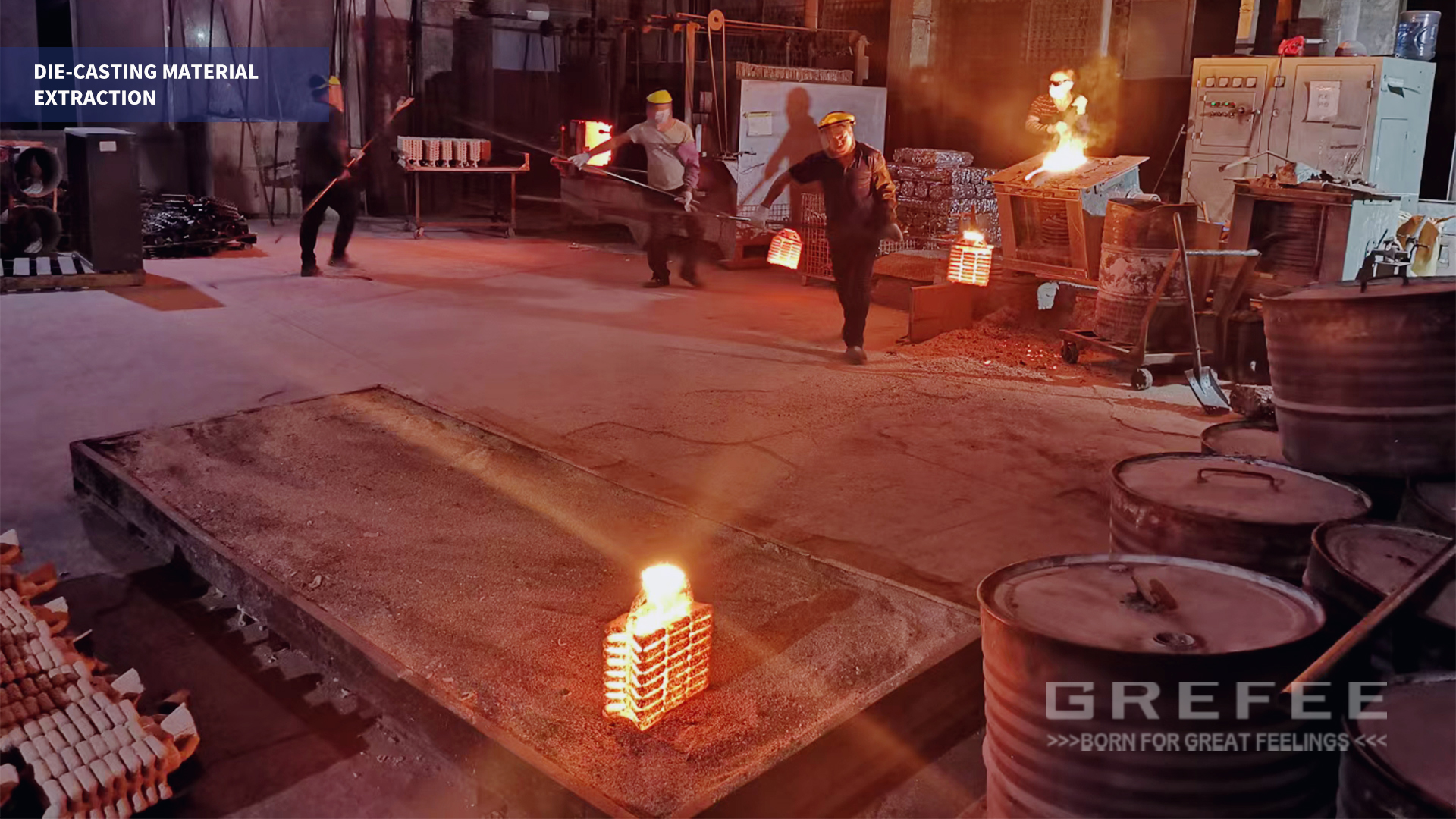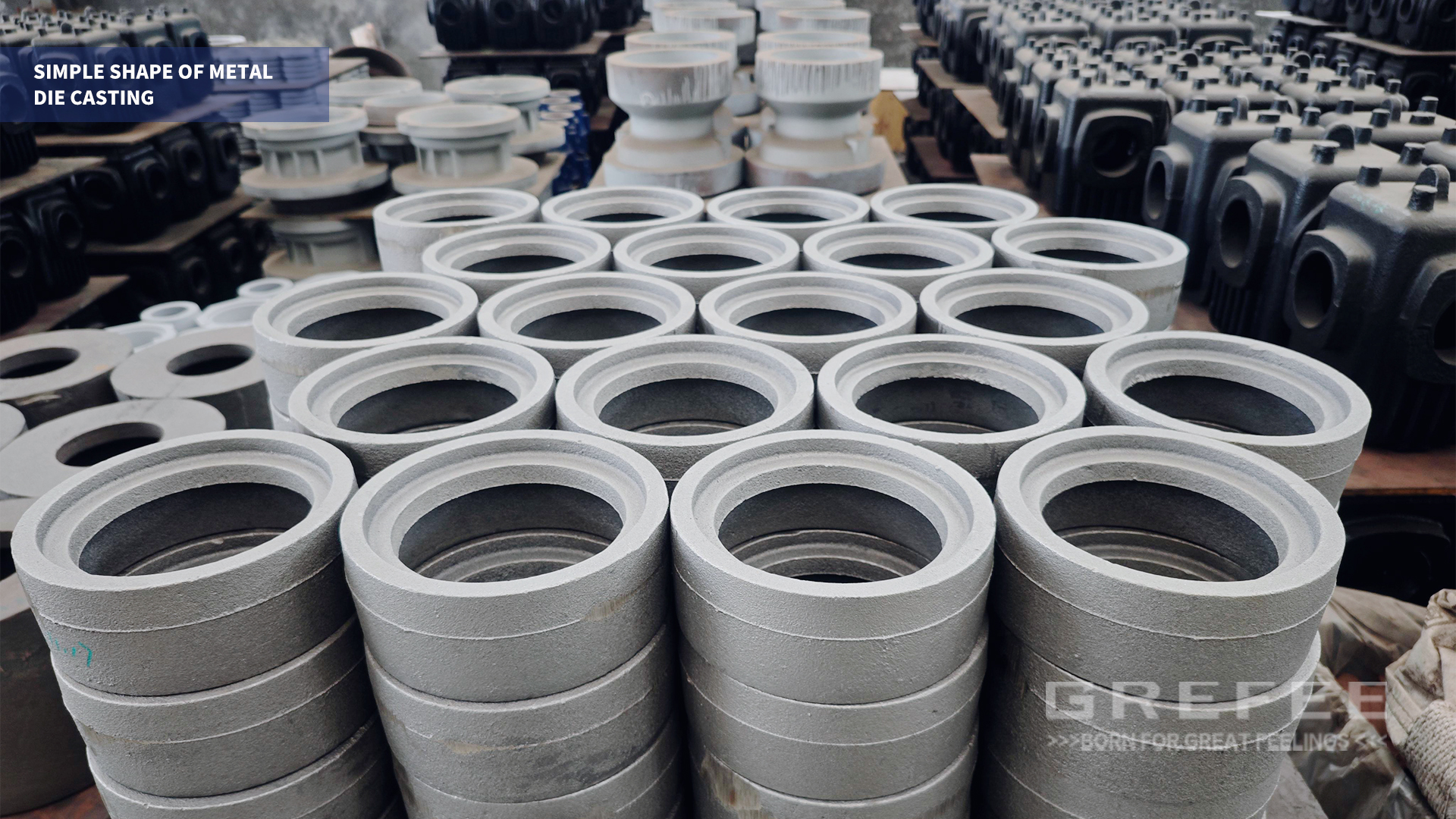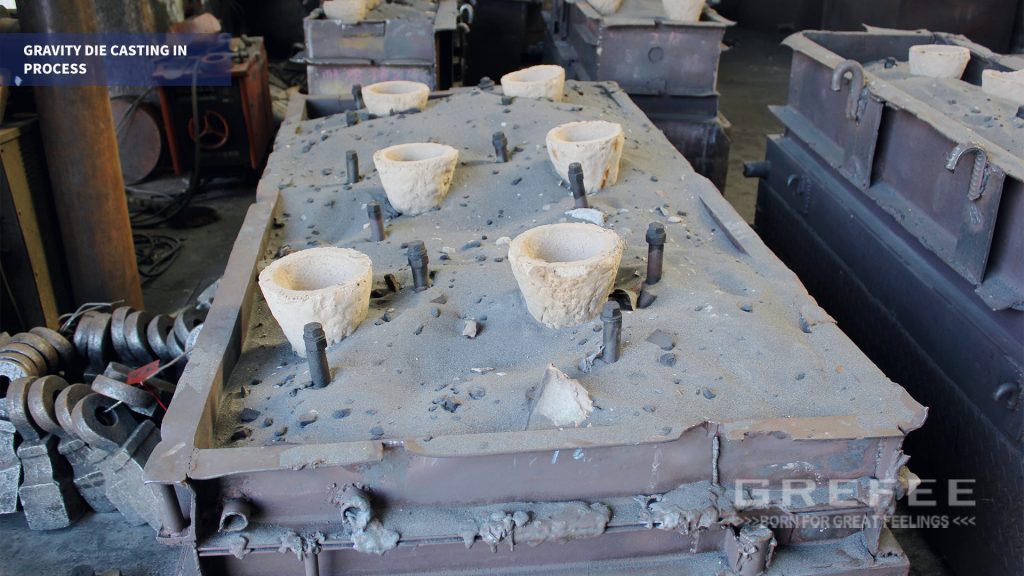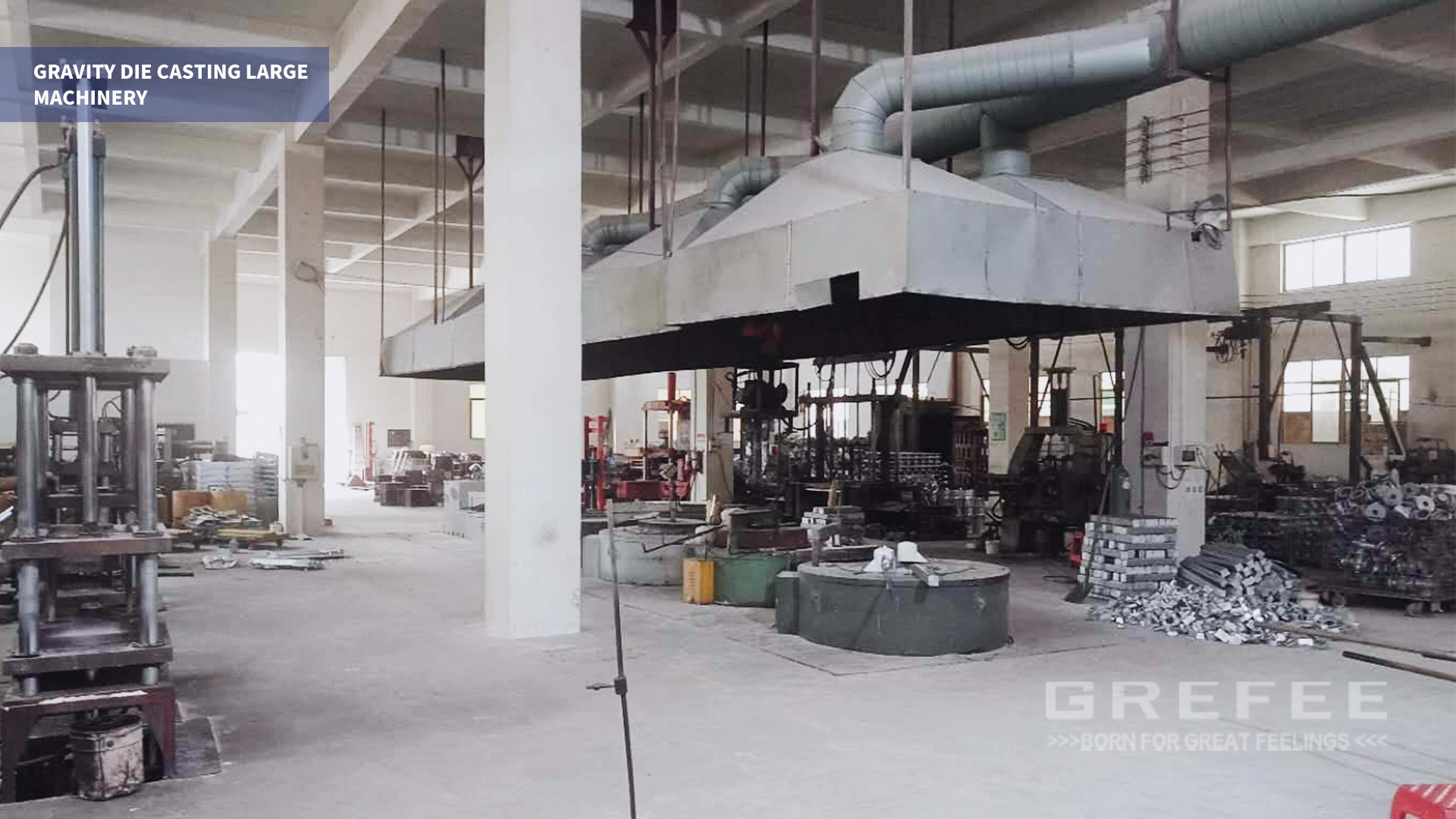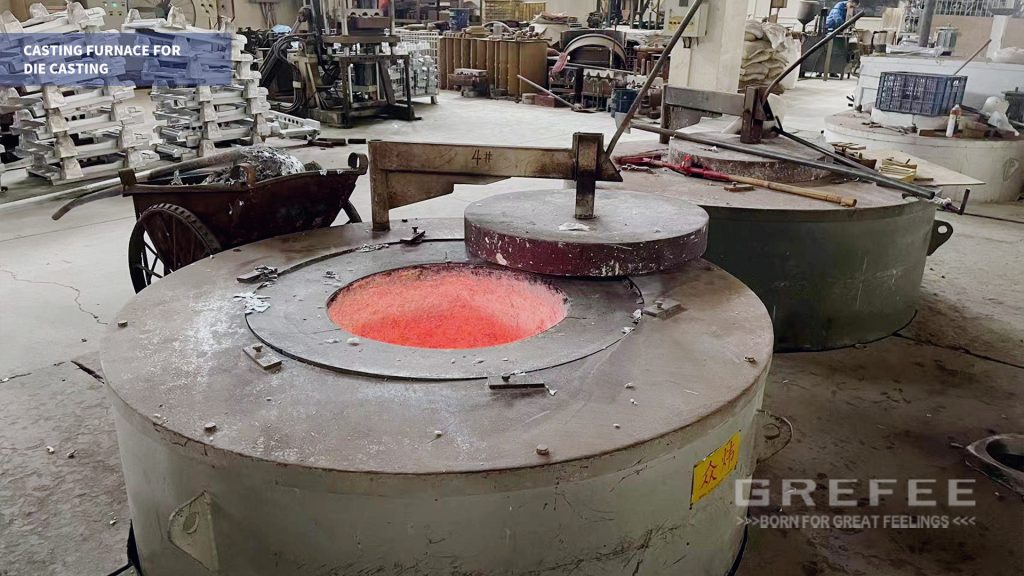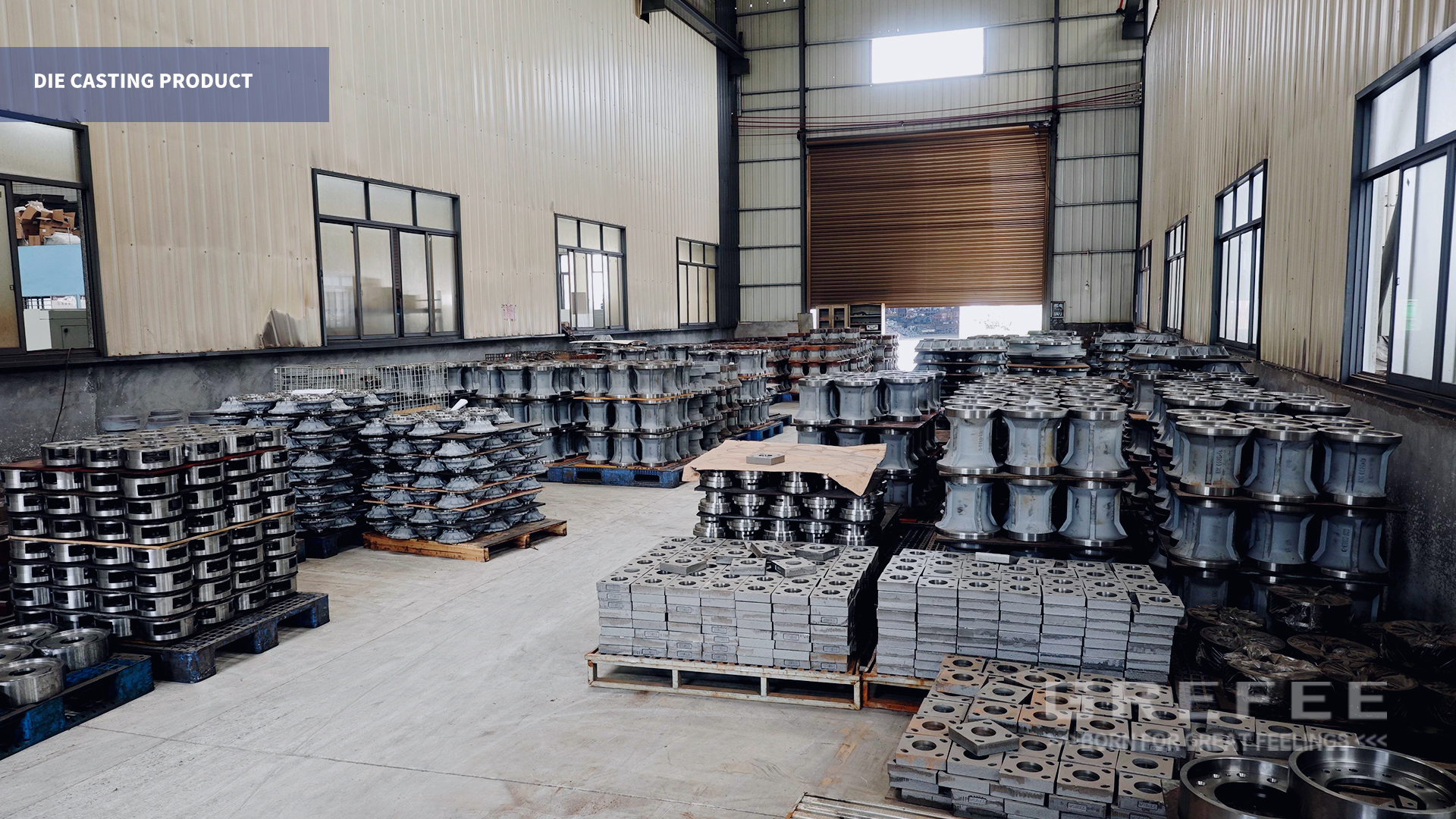Metal Mold Gravity Casting (Hard Mold Casting)

Posted on :On May 18th,2024 By GREFEE
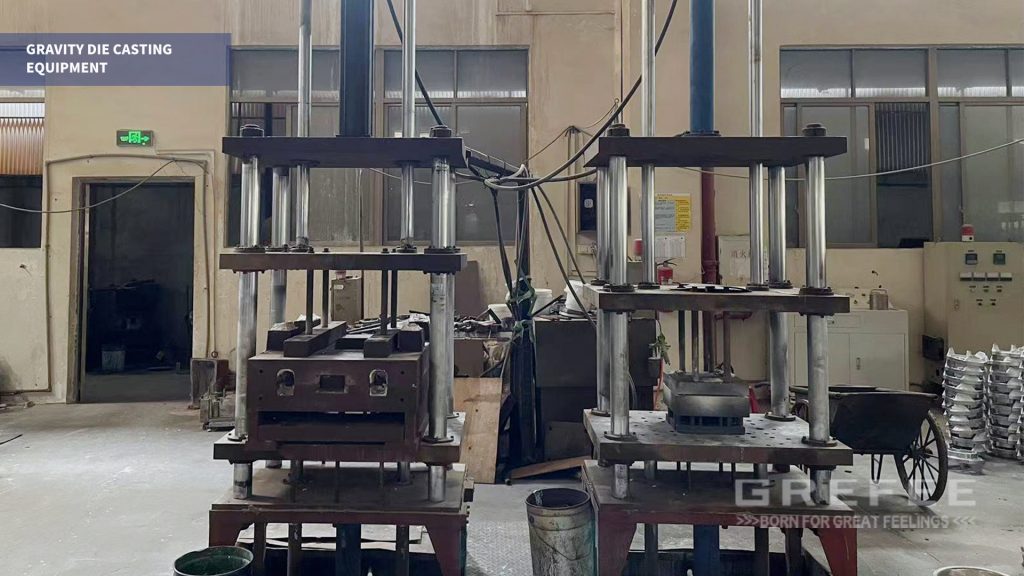
Gravity casting, also known as hard mold casting, is a casting method that pours liquid metal into the metal mold to obtain castings. The mold is made of metal and is reusable.
Compared with sand casting, metal gravity casting has many advantages in terms of technology and economy.
1.The mechanical properties of castings produced by metal molds are higher than those of sand molds.
The same alloy can increase its tensile strength by an average of about 25%, yield strength by an average of about 20%, and its corrosion resistance and hardness are also significantly improved.
2. The precision and surface smoothness of castings are higher than those of sand castings, and the quality and size are stable.
3.The process yield of castings is high, and the consumption of liquid metal is reduced, generally saving 15-30%.
4.No sand or using less sand can generally save 80-100% of shaping materials.
In addition, high production efficiency also reduces the causes of defects. Simple process also makes it easy to achieve mechanization and automation. Although metal mold casting has many advantages, there are also shortcomings. For example:
1.High manufacturing cost of metal molds.
2.Metal molds are not ventilate and have no yielding properties, making them prone to defects, such as insufficient washing of castings, cracking, or white cast iron parts.
3.During metal mold casting, the working temperature, the pouring temperature and speed of the alloy, the time the casting stays in the mold, and the coating used are all highly realted to the quality of the casting and require strict control.
There are some limitations on the aspects of gravity and shapes in the castings produced at present with metal mold die casting technology, such as black metal only can be used to produce castings with simple shapes. The weight of castings should not be too high and small size castings with thick wall thickness cannot be produced.
Therefore, we need to consider the below factors when applying the metal die casting:
1.Suitable casting shapes and weight.
2.Sufficient quantity
3.Complete the production before the deadline
Characteristics of metal die casting forming process:
There are significant differences between the metal and sand die castings, such as sand die casting are air permeability but metal does not. While the heat conduction of sand die casting is worse than that of metal die casting.
Sand molds have yielding properties, while metal molds do not.
These characteristics have developed its own rules.
The influence of air changing inside of the cavity to the formation of casting: when the metal is being filled, the air inside of the cavity must be released immediately, however, the air permeability is poor, so the quality can be affected easily even with only a small mistake.
Characteristics of heat exchanging of casting solidification process:
At the point when metal liquid is poured into the cavity, it will transfer the heat to the metal wall. The metal liquid loses the heat by the wall and to solid and shrink. While the temperature of metal wall will increase and the wall will inflate, then there is a gap between the casting and wall. Before the temperature of the “casting – gap – metal mold” is not same, the cooling of castings is considered happening in “gap”, and the metal wall is being heated through the gap.
Influence of castings to metal mold hinders shrinkage:
Metal mold or metal mold core, there is no deformability during the solidification process, and affects the shrinkage of casting, which is another characteristic.
Metal mold die casting designing:
According to some characteristics of metal mold die casting, to ensure the quality and simplify the metal mold structure and maximize its technical values, the first thing is to analyze its structure and use proper casting technology,
1. Process analysis of casting structure
A good processability of metal mold casting structure is the key for casting quality and to fully utilize its advantages. Reasonable casting structure should follow below rules:
1) Casting structure should not prevent the mold from being formed or shrunk.
2.)No thickness difference to prevent casting from shrinkage and loosening due to the temperature difference.
3.)Limits the minimal thickness of metal casting.
In addition, the accuracy and smoothness of non-machined surfaces of castings should be appropriately required.
2. Gating location of metal mold castings
The gating locations of castings is directly related to many aspects, such as the number of core and parting surfaces, leading-in location of metal liquid, shrinkage effects of head, and smoothness of air releasing as well as the complexity of metal mold. Gating location selection rules are:
1)Ensure the metal liquid is filling smoothly and release air easily to avoid air involved in the metal liquid and metal is oxidated.
2)Benefited for solidifying orderly, and good replenishment and contraction to obtain dense castings.
3)Minimize the number of cores as much as possible, easy to place, stable, and easy to shape.
4)Benefit for simplifying the metal mold structure and easy casting molding, etc.
3. Selection of casting parting surface
There are three types of parting surfaces, vertical, horizontal, and comprehensive classification (vertical, horizontal mixed parting, or curved parting). The principle for selecting the parting surface is as follows:
1)To simplify the metal structure and increase the accuracy of casting, castings with simple shapes should be placed in the half molds or most in the half molds.
2)The number of parting surfaces should be minimized to achieve beautiful appearance and the casting is easy to produce and convenient to replace the core.
3)The selected parting surface should ensure convenient setting of the sprue and riser, smooth metal flow during mold filling, and facilitate the discharge of gas from the mold cavity.
4)The parting surface should not be on the machining reference surface.
5)Try to avoid surface parting and reduce the number of disassembled parts and active components.
4. Gating system design
According to some characteritics of metal mold casting, there are some aspects that need to pay attention to, high speed of metal pouring, 20% higher than that of sand mold. In addition, in the liquid metal filling process, the flowing direction should be same as the liquid direction, so the gas inside the cavity can be released successfully, and the gas can be pushed to casting head or gas head. On top of that, the metal liquid should keep flat and smooth, rather than producing turbos or impacts to the wall or core, even splits.
MORE BOLG
Insert mold in injection mold service
What are advantages and disadvantages of Zinc alloy and Aluminum alloy?
Inspection standards for injection molded partappearance
How to judge the quality of your plastic products?
Inspection standards for CNC machining
To ensure that your products are 100% qualified
Categories

Try GREFEE now,for free
We keep your uploaded files confidential and secure.
